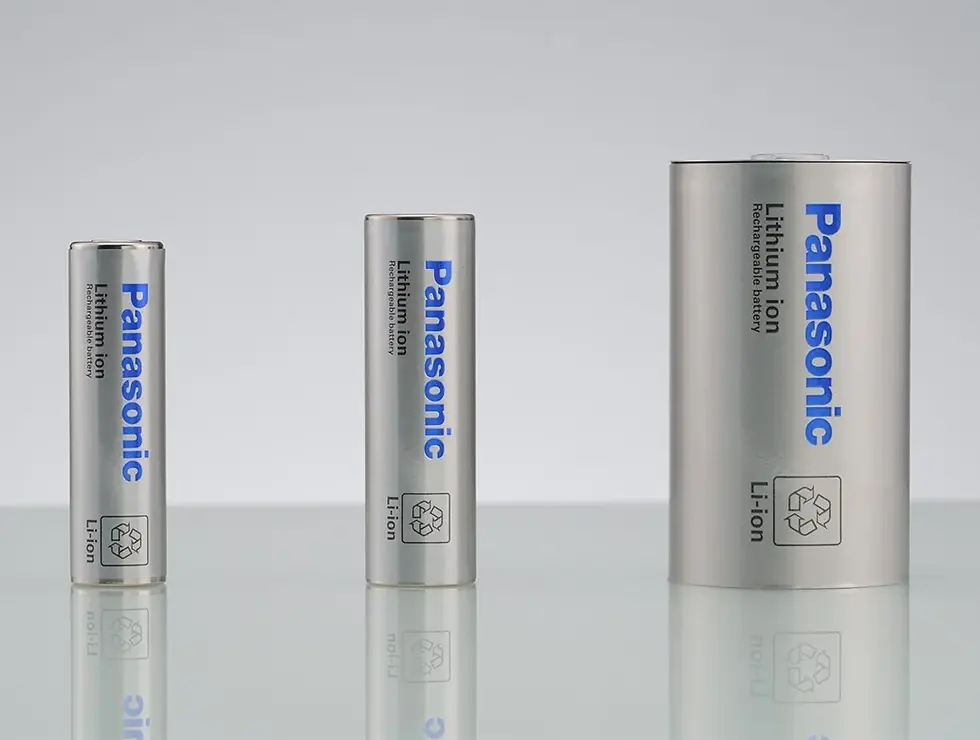Powering the Future: A Look Inside Panasonic’s Massive New U.S. EV Battery Factory
- Hanaa Siddiqi
- Aug 18
- 3 min read

The International Energy Agency expects electric vehicle sales to increase by 25 percent in 2025. This growth depends on one thing above all else: reliable and sustainable battery systems.
By the end of 2023, Panasonic had already supplied its battery technology to more than three million electric vehicles. The company now hopes to leverage this foundation to accelerate decarbonisation in transportation and reshape how mobility impacts the planet.
In North America, Panasonic has positioned itself as a cornerstone supplier of lithium-ion batteries, which remain essential to the entire EV market. These batteries are not just about powering cars. They are central to the broader electrification movement, a shift that aims to replace fossil-fuel operations with cleaner alternatives.
“Beyond lowering emissions from our internal operations, this effort also furthers Panasonic's pledge to combat climate change,” explains Allan Swan, CEO of Panasonic Energy in North America.

“The automotive battery sector is a cornerstone in Panasonic's strategy to address environmental issues.”
Leadership at Panasonic is driving ambitious growth, with projects that include the Tesla Gigafactory in Nevada as well as a new facility in De Soto, Kansas. Construction at the Kansas site commenced in late 2022, and full-scale production is anticipated to begin in 2025.
“The shift to EVs requires training the next generation to invent, design, and build the battery technology that will power our future,” says Allan.
“We hope to inspire the young people who will create a more vibrant and sustainable future, and we are committed to helping them achieve their goals.”

Once operational, the plant will manufacture 2170 cylindrical lithium-ion batteries. Automakers value these cells for their high energy density, strong safety profile, and reliable performance. In a country where long-distance driving is a daily occurrence, Panasonic believes that its high-capacity technology offers a decisive edge.
“What we do here today will impact your tomorrow,” says Allan.
The company also emphasises the benefits of sourcing materials locally.
“In North America, the shift to EVs is expected to accelerate against the backdrop of stricter environmental regulations and consumer demand for high-performing, fun-to-drive electric vehicles,” Allan says.
“In addition, high demand for long-distance travel in the U.S. makes this the market where we can best utilise our high-capacity technology, one of our strengths.
“If trucks, trains, and buses are included, this is a very large market for automotive batteries.”
By shortening supply chains, Panasonic not only strengthens resilience but also reduces transportation emissions. In effect, the EV infrastructure in the United States becomes cleaner, more efficient, and better prepared for rapid expansion.
Allan says: “North America offers local sourcing of raw materials mined and processed in a responsible manner, often using renewable energy and other sustainability best practices.

“As a pioneer in this market, we are making a rapid succession of bold investments to strengthen our position in North America as the leading company driving the adoption of EVs.”
Producing batteries is energy-intensive. Panasonic acknowledges that nearly 90 percent of emissions tied to its batteries occur during extraction, processing, and logistics. The company intends to confront this challenge directly. Within the next decade, its Kansas plant will transition to running entirely on locally sourced renewable energy.

“Our Kansas plant is designed to operate as a Panasonic-designated net zero facility,” says Allan.
“We will minimise the amount of electricity needed for production and all aspects, from wiring to machinery and equipment, will support CO₂ emissions reduction.”
Panasonic’s long-term vision rests on collaboration. The company is forming alliances with partners that share its sustainability goals.
One example is Redwood Materials, a US-based recycler that specialises in recovering and reusing critical battery components. Panasonic has already secured purchase agreements for recycled cathode materials and copper foil. Both are vital to lithium-ion battery production.
“Our partnership with Redwood Materials began in 2019, and together we are recycling waste materials from our Nevada plant,” explains Allan.
Other partnerships add to this circular strategy. Sila Nanotechnologies provides silicon anode materials. Novonix offers artificial graphite designed to reduce carbon emissions. Nouveau Monde Graphite in Canada supplies renewable-powered graphite for anodes.
Together, these collaborations build a supply chain that is more sustainable, less carbon-intensive, and far better aligned with the clean energy future Panasonic envisions.
"By procuring Canadian materials for our US plants, we can shorten the supply chain, significantly reducing distribution-related CO2 emissions," Allan says.
"They are like-minded companies that are sincerely facing the challenge of reducing CO₂ emissions.”





![LOGOTYPE [GREEN_DARK GREEN].png](https://static.wixstatic.com/media/d6e0b6_7c15be730f2c42d4ad22da5f1e69fa35~mv2.png/v1/fill/w_877,h_198,al_c,q_85,usm_0.66_1.00_0.01,enc_avif,quality_auto/LOGOTYPE%20%5BGREEN_DARK%20GREEN%5D.png)



Comments